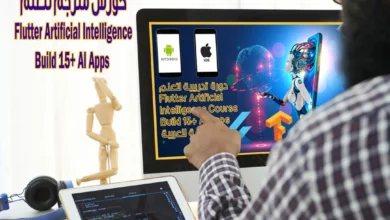Introduction
Python is one of the most popular and widely used programming languages in the world. It is known for its simplicity, readability, versatility, and power. Python can be used for various purposes, such as web development, data analysis, machine learning, automation, and more. Python is also a great language for beginners, as it has a gentle learning curve and a large and supportive community.
However, learn Python can also be challenging and time-consuming, especially if you don’t have a clear and effective plan. You may feel overwhelmed by the amount of information and resources available or frustrated by the lack of feedback and guidance. You may also lose motivation and interest if you don’t see any progress or results.
So, how can you learn Python faster and easier? How can you make the most of your time and effort, and achieve your learning goals? In this article, we will show you some proven methods and strategies that will help you master Python in no time. These methods and strategies are based on scientific research, expert advice, and personal experience. They will help you learn Python more efficiently, effectively, and enjoyably.
Why Learn Python?
Before we dive into the methods and strategies, let’s first answer a simple question: why learn Python? What are the benefits and advantages of learn Python? Here are some of the main reasons why you should learn Python:
Python is easy to learn and use.
- Python has a simple and intuitive syntax, which makes it easy to read and write. Python also has a rich and comprehensive standard library, which provides many built-in functions and modules that you can use for various tasks. Python also supports multiple programming paradigms, such as procedural, object-oriented, and functional programming, which gives you more flexibility and choice.
Python is versatile and powerful.
- Python can be used for a wide range of applications, such as web development, data analysis, machine learning, automation, and more. Python also has a large and diverse ecosystem of third-party libraries and frameworks, which extend its functionality and capabilities. Python also has a high-level of abstraction, which allows you to focus on the logic and problem-solving, rather than the low-level details and implementation.
Python is in high demand and rewarding.
- Python is one of the most popular and widely used programming languages in the world. According to the [TIOBE Index], Python is ranked as the third most popular programming language as of April 2023. According to the [Stack Overflow Developer Survey], Python is the second most loved and wanted programming language by developers. According to the [Indeed.com], Python is the second most in-demand programming language by employers. Learn Python can open up many opportunities and possibilities for your career and personal growth.

How to Learn Python Faster and Easier?
Now that you know why you should learn Python, let’s see how you can learn Python faster and easier. Here are some of the methods and strategies that you can use to improve your Python learning:
Use Online Resources
One of the best ways to learn Python is to use online resources, such as courses, tutorials, books, blogs, podcasts, videos, and more. Online resources are convenient, accessible, and affordable. You can learn Python at your own pace and place, and choose the topics and levels that suit your needs and interests. Online resources are also updated and interactive, which means you can get the latest and relevant information and feedback.
However, not all online resources are created equal. Some online resources are more reliable, comprehensive, and engaging than others. Therefore, you need to be careful and selective when choosing online resources. Here are some tips and criteria that you can use to evaluate and choose online resources:
Check the source and reputation.
- You should always check the source and reputation of the online resource before using it. You should look for online resources that are created and maintained by reputable and credible organizations, institutions, or individuals. You should also look for online resources that have positive reviews, ratings, and feedback from other users and learners.
Check the content and quality.
- You should also check the content and quality of the online resource before using it. You should look for online resources that are relevant, accurate, and up-to-date. You should also look for online resources that are clear, concise, and consistent. You should also look for online resources that are well-structured, well-designed, and well-presented.
Check the difficulty and suitability.
- You should also check the difficulty and suitability of the online resource before using it. You should look for online resources that match your current level of knowledge and skill. You should also look for online resources that align with your learning goals and objectives. You should also look for online resources that cater to your learning style and preference.
Some examples of online resources that you can use to learn Python are:
[Python.org]: This is the official website of Python, where you can find the official documentation, tutorials, downloads, and news about Python.
[Real Python]: This is one of the most popular and comprehensive websites for learning Python, where you can find high-quality courses, tutorials, books, quizzes, and more.
[Python for Everybody]: This is a free and open-source course that teaches the basics of Python programming, data structures, web development, and databases.
[Automate the Boring Stuff with Python]: This is a best-selling book that teaches you how to use Python to automate various tasks, such as web scraping, file manipulation, email sending, and more.
[Python Tutor]: This is an interactive tool that helps you visualize and understand how Python code works, by showing you the execution steps and data structures.
Here are free resources for downloadable training courses:
100Days of Code 2022: Get the course for free
The complete Python training. Learn A – Z of Python password: XDJ
The Complete Python Bootcamp From Zero to Hero in Python
Learn Python 3 From Scratch: Python Basics And Fundamentals
52 Weeks of Python Becoming a complete Python software developer
Use Interactive Tools
Another way to learn Python faster and easier is to use interactive tools, such as online editors, interpreters, notebooks, and playgrounds. Interactive tools are useful, fun, and engaging. You can use interactive tools to write, run, and test your Python code in real-time, without installing or configuring anything. You can also use interactive tools to experiment and explore different aspects and features of Python, such as syntax, data types, operators, functions, modules, and more.
However, not all interactive tools are the same. Some interactive tools are more user-friendly, powerful, and versatile than others. Therefore, you need to be careful and selective when choosing interactive tools. Here are some tips and criteria that you can use to evaluate and choose interactive tools:
Check the functionality and compatibility.
- You should always check the functionality and compatibility of the interactive tool before using it. You should look for interactive tools that support the latest version and features of Python. You should also look for interactive tools that work well with different browsers, devices, and platforms. You should also look for interactive tools that have minimal or no errors, bugs, or glitches.
Check the interface and usability.
- You should also check the interface and usability of the interactive tool before using it. You should look for interactive tools that have a simple and intuitive interface, which makes it easy to use and navigate. You should also look for interactive tools that have a responsive and fast performance, which makes it smooth and enjoyable to use. You should also look for interactive tools that have a clear and helpful feedback, which makes it easy to understand and debug.
Check the features and options.
- You should also check the features and options of the interactive tool before using it. You should look for interactive tools that have a rich and diverse set of features and options, which makes it flexible and adaptable to your needs and preferences. You should also look for interactive tools that have a collaborative and social aspect, which makes it possible and fun to share and learn with others.
Some examples of interactive tools that you can use to learn Python are:
[Repl.it]: This is one of the most popular and powerful online editors and interpreters for Python, where you can write, run, and share your Python code with ease.
[Google Colab]: This is a free and cloud-based notebook environment for Python, where you can write, run, and collaborate on your Python code with interactive widgets, charts, and graphs.
[PythonAnywhere]: This is a free and online platform for Python, where you can write, run, and host your Python code and web applications with a full-featured Python environment.
[Trinket]: This is a fun and creative online playground for Python, where you can write, run, and embed your Python code and projects with graphics, sounds, and animations.

Use Practice Exercises
Another way to learn Python faster and easier is to use practice exercises, such as quizzes, puzzles, challenges, and games. Practice exercises are effective, rewarding, and enjoyable. You can use practice exercises to reinforce and consolidate your Python knowledge and skills, by applying what you have learned to solve various problems and tasks. You can also use practice exercises to assess and improve your Python knowledge and skills, by getting instant and constructive feedback and guidance.
However, not all practice exercises are the same. Some practice exercises are more relevant, appropriate, and stimulating than others. Therefore, you need to be careful and selective when choosing practice exercises. Here are some tips and criteria that you can use to evaluate and choose practice exercises:
Check the topic and level.
- You should always check the topic and level of the practice exercise before doing it. You should look for practice exercises that cover the topics and concepts that you have learned or want to learn. You should also look for practice exercises that match your current level of knowledge and skill, and challenge you to improve and advance.
Check the format and style.
- You should also check the format and style of the practice exercise before doing it. You should look for practice exercises that have a clear and consistent format, which makes it easy to follow and understand. You should also look for practice exercises that have a varied and engaging style, which makes it fun and interesting to do.
Check the feedback and solution.
- You should also check the feedback and solution of the practice exercise before doing it. You should look for practice exercises that have a prompt and accurate feedback, which makes it easy to check and correct your answers. You should also look for practice exercises that have a detailed and explained solution, which makes it easy to learn and improve from your mistakes.
Use Projects
Another way to learn Python faster and easier is to use projects, such as web applications, data analysis, machine learning, automation, and more. Projects are practical, meaningful, and satisfying. You can use projects to apply and integrate your Python knowledge and skills to create something useful and valuable. You can also use projects to showcase and demonstrate your Python knowledge and skills to others, such as employers, clients, or peers.
However, not all projects are the same. Some projects are more suitable, relevant, and interesting than others. Therefore, you need to be careful and selective when choosing projects. Here are some tips and criteria that you can use to evaluate and choose projects:
Check the scope and complexity.
- You should always check the scope and complexity of the project before starting it. You should look for projects that are realistic and achievable, given your current level of knowledge and skill, and the time and resources available. You should also look for projects that are challenging and stimulating, but not overwhelming or frustrating. You should also look for projects that are modular and scalable, which means you can break them down into smaller and simpler parts, and expand them later if needed.
Check the purpose and value.
- You should also check the purpose and value of the project before starting it. You should look for projects that have a clear and specific goal and objective, which makes it easy to measure and evaluate your progress and results. You should also look for projects that have a personal and social impact, which means they can solve a problem, fulfill a need, or provide a benefit for yourself or others.
Check the interest and motivation.
- You should also check the interest and motivation of the project before starting it. You should look for projects that match your interests and passions, which makes it fun and enjoyable to work on. You should also look for projects that spark your curiosity and creativity, which makes it exciting and rewarding to work on. You should also look for projects that inspire your learning and growth, which makes it worthwhile and meaningful to work on.
Some examples of projects that you can use to learn Python are:
[Flask Blog]: This is a web application that allows you to create and manage your own blog, using the Flask framework, SQLite database, and Bootstrap template.
[Pandas Data Analysis]: This is a data analysis project that allows you to explore and visualize the World Happiness Report, using the Pandas library, Matplotlib library, and Seaborn library.
[TensorFlow Machine Learning]: This is a machine learning project that allows you to classify images of handwritten digits, using the TensorFlow library, Keras library, and MNIST dataset.
[PyAutoGUI Automation]: This is an automation project that allows you to control your mouse and keyboard, using the PyAutoGUI library, and perform various tasks, such as opening applications, typing text, or clicking buttons.
Use Communities

Another way to learn Python faster and easier is to use communities, such as forums, groups, chats, and events. Communities are supportive, helpful, and friendly. You can use communities to connect and interact with other Python learners and experts, who can offer you advice, feedback, guidance, and support. You can also use communities to share and exchange your Python knowledge and skills, as well as your projects and experiences, with other Python learners and experts, who can offer you appreciation, recognition, and inspiration.
However, not all communities are the same. Some communities are more active, relevant, and respectful than others. Therefore, you need to be careful and selective when choosing communities. Here are some tips and criteria that you can use to evaluate and choose communities:
Check the activity and responsiveness.
- You should always check the activity and responsiveness of the community before joining it. You should look for communities that are active and lively, which means they have a high and frequent level of participation and interaction. You should also look for communities that are responsive and timely, which means they have a low and reasonable level of delay and latency.
Check the relevance and quality.
- You should also check the relevance and quality of the community before joining it. You should look for communities that are relevant and focused, which means they have a clear and specific topic and purpose. You should also look for communities that are quality and moderated, which means they have a high and consistent level of content and discussion.
Check the respect and diversity.
- You should also check the respect and diversity of the community before joining it. You should look for communities that are respectful and courteous, which means they have a low and acceptable level of conflict and disagreement. You should also look for communities that are diverse and inclusive, which means they have a wide and varied range of members and perspectives.
Some examples of communities that you can use to learn Python are:
[Stack Overflow]: This is one of the most popular and authoritative websites for programming questions and answers, where you can ask and answer Python-related questions, and learn from other Python experts and learners.
[Reddit]: This is one of the most popular and influential websites for online discussions and content sharing, where you can join and participate in various Python-related subreddits, such as r/Python, r/learnpython, r/PythonProjects, and more.
[Discord]: This is one of the most popular and convenient websites for online chat and voice communication, where you can join and chat with various Python-related servers, such as Python Discord, Python Community, Python Developers, and more.
[Meetup]: This is one of the most popular and useful websites for online and offline events and groups, where you can find and attend various Python-related meetups, such as PyLadies, PyData, PyCon, and more.
Conclusion
Python is a popular and powerful programming language, but learning it can be challenging and time-consuming. However, by using the methods and strategies that we have discussed in this article, you can learn Python faster and easier. These methods and strategies are:
Use online resources!
such as courses, tutorials, books, blogs, podcasts, videos, and more, to learn Python from reliable, comprehensive, and engaging sources.
Use interactive tools!
such as online editors, interpreters, notebooks, and playgrounds, to write, run, and test your Python code in real-time, and experiment and explore different aspects and features of Python.
Use practice exercises!
such as quizzes, puzzles, challenges, and games, to reinforce and consolidate your Python knowledge and skills, and assess and improve your Python knowledge and skills.
Use projects!
such as web applications, data analysis, machine learning, automation, and more, to apply and integrate your Python knowledge and skills to create something useful and valuable, and showcase and demonstrate your Python knowledge and skills to others.
Use communities!
such as forums, groups, chats, and events, to connect and interact with other Python learners and experts, who can offer you advice, feedback, guidance, and support, and share and exchange your Python knowledge and skills, as well as your projects and experiences, with other Python learners and experts, who can offer you appreciation, recognition, and inspiration.
By using these methods and strategies, you can learn Python more efficiently, effectively, and enjoyably, and achieve your learning goals and objectives. We hope that this article has helped you learn Python faster and easier, and we wish you all the best in your Python learning journey.
Frequently Asked Questions
Here are some of the frequently asked questions and their answers about learning Python faster and easier:
Q: How long does it take to learn Python?
A: There is no definitive answer to this question, as it depends on various factors, such as your prior knowledge and experience, your learning goals and objectives, your learning methods and strategies, your learning pace and style, and your learning resources and tools. However, according to some estimates, it can take anywhere from a few weeks to a few months to learn the basics of Python, and anywhere from a few months to a few years to master Python.
Q: What are the best resources to learn Python?
A: There is no definitive answer to this question, as it depends on your personal preferences and needs. However, some of the most popular and recommended resources to learn Python are: [Python.org], [Real Python], [Python for Everybody], [Automate the Boring Stuff with Python], and [Python Tutor].
Q: What are the best tools to learn Python?
A: There is no definitive answer to this question, as it depends on your personal preferences and needs. However, some of the most popular and useful tools to learn Python are: [Repl.it], [Google Colab], [PythonAnywhere], and [Trinket].
Q: What are the best projects to learn Python?
A: There is no definitive answer to this question, as it depends on your personal preferences and needs. However, some of the most popular and interesting projects to learn Python are: [Flask Blog], [Pandas Data Analysis], [TensorFlow Machine Learning], and [PyAutoGUI Automation].
Q: What are the best communities to learn Python?
A: There is no definitive answer to this question, as it depends on your personal preferences and needs. However, some of the most popular and supportive communities to learn Python are: [Stack Overflow], [Reddit], [Discord], and [Meetup].





